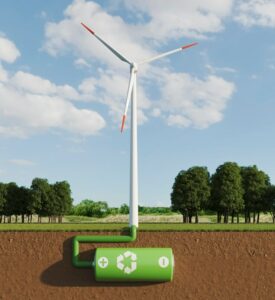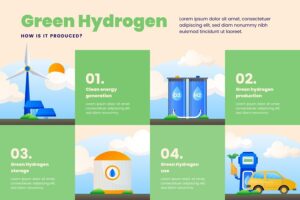The Global Energy Landscape in 2033: A Paradigm Shift to Renewable Sources and Advanced Storage Solutions

The global energy paradigm has witnessed a rapid transformation in recent decades, fueled by escalating concerns about climate change, breakthroughs in renewable energy technologies, and geopolitical aspects. This article explores the potential state of the global energy profile 2033, emphasizing the transition to renewable energy sources and advanced energy storage solutions and the effects these developments might have on the global energy market, environment, and geopolitical landscape.
Decarbonization and the Evolution of Renewable Energy Sources
Decarbonization efforts have accelerated migration from fossil fuels to renewable energy sources. By 2033, solar and wind power are projected to constitute most of the global energy mix, supplemented by hydroelectric, geothermal, and biomass energy. The steep decline in the cost of renewable technologies, in conjunction with advances in energy efficiency, will further expedite the adoption of renewable energy.
Advanced Energy Storage Solutions
As renewable energy sources gain prominence, advanced energy storage solutions will become increasingly critical to address the intermittency inherent in solar and wind power. By 2033, next-generation battery technologies, such as solid-state, flow, and lithium-air batteries, will offer efficient and economically viable storage options. Concurrently, large-scale energy storage solutions, including pumped hydro storage and compressed air energy storage, will aid in stabilizing the grid and facilitating the integration of more significant proportions of renewable energy.

The Function of Nuclear Energy in the Future Energy Mix
Although the role of nuclear energy in the future energy mix remains contentious, it is anticipated that advanced nuclear reactors, including small modular reactors (SMRs) and Generation IV designs, will contribute to the global energy profile in 2033. These advanced reactors will feature enhanced safety, minimized waste, and augmented efficiency, rendering them more appealing than traditional nuclear power plants.
The Rise of Green Hydrogen
Green hydrogen, generated via water electrolysis utilizing renewable energy, is expected to play a substantial role in the global energy landscape in 2033. Green hydrogen can be employed as an energy carrier for power generation, transportation, and industrial processes, offering a versatile solution to decarbonize multiple sectors. Moreover, advancements in electrolyzer technology and reductions in renewable energy costs will drive the cost of green hydrogen production downward, rendering it increasingly competitive with fossil fuels.

Grid Modernization and the Integration of Artificial Intelligence
To accommodate the influx of renewable energy and distributed generation, the power grid of 2033 will necessitate significant modernization. Advanced metering infrastructure, innovative grid technologies, and grid-scale energy storage will be essential to maintain grid stability and efficiency. Furthermore, artificial intelligence (AI) and machine learning (ML) algorithms will optimize grid operations, forecast demand, and manage distributed energy resources.
Geopolitical Ramifications
Transitioning to a renewable energy-dominated global energy profile will elicit profound geopolitical ramifications. Countries with renewable resources like solar and wind will emerge as the new energy exporters. In contrast, traditional fossil fuel exporters must adapt to the shifting market dynamics. Additionally, decentralizing energy production will diminish dependence on energy imports, potentially leading to a more stable geopolitical landscape.
By 2033, the global energy profile will have experienced considerable transformation, with renewable energy sources, advanced energy storage solutions, and grid modernization taking the spotlight. This shift will mitigate climate change, redefine geopolitical relationships, and reshape the global energy market. As technology progresses, the energy landscape will further adapt, potentially resulting in a more sustainable and secure global energy system.